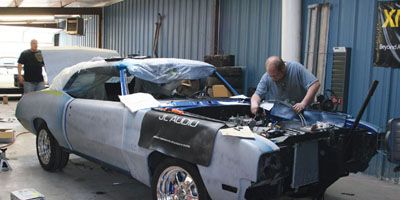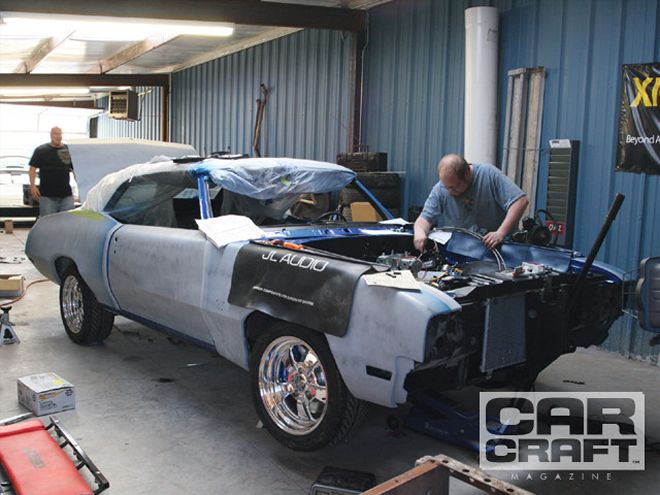
 The '71 GS is coming along, but the monster cam with 302 degrees of advertised duration doesn't exactly generate much in the way of vacuum.
The '71 GS is coming along, but the monster cam with 302 degrees of advertised duration doesn't exactly generate much in the way of vacuum.
Bad brakes is the only reason we would ever consider a cam profile to be too aggressive. Ya see, as the duration and overlap in a cam profile are increased, either because of aggressive lobes with a lot of lift or a narrow lobe-separation angle, the intake valve is opened before the exhaust valve is closed completely. This is the cause of coolness such as a lopey idle and power-enhancing cylinder scavenging and downers such as a low vacuum signal and poor idle.
The problem is the power-brake booster needs between 14 and 16 inches of vacuum (depending on whom you ask) to properly assist the brakes. Most of the cams we like produce 10 or fewer inches of vacuum at idle or at speed when the throttle blades are suddenly closed and you step on the brakes. There are a couple of common fixes for cars that don't build vacuum-an electric or beltdriven vacuum pump (like on a diesel truck) or a hydroboost. While the electric pumps are functional, they are noisy and take up a lot of space under the hood. The hydroboost is considered the better fix.
A hydroboost uses the power steering pump to produce the pressure needed to operate the braking system. Fluid flows from the pump to the hydroboost, then to the gearbox or steering rack, and finally the low pressure fluid is returned to the pump. The hydroboost is designed to use the high-pressure fluid under braking conditions. Otherwise, the pressure is simply bypassed back through the steering system. The Power Brake Service hydroboost we used has the capability of producing 2000 psi, much more than a typical stock vacuum-assist booster can provide.
Another benefit of the hydroboost setup is the reserve tank. In the event the engine stalls, the hydroboost unit will provide 60 to 75 percent of the total braking force to the brakes on the first stab of the pedal, then 30 to 40 percent power if the pedal is released and applied again, and another 10 to 20 percent for another application. After that, the reserve is depleted and the system will be in manual mode. This is a safety net that even stock vacuum boosters cannot provide.
All these features make for a great way to restore the power-assist to your brakes. We recently went through the entire process on a '71 Buick GS. The GS has a 400hp Buick 350, which uses the largest cam Poston Buick offers. Other than a couple of pressure line adapter fitment issues, the install took just a couple of hours and was a breeze. The results were impressive, the pedal is much more firm than the stock system (even before the big cam), and the stopping power is better than ever.